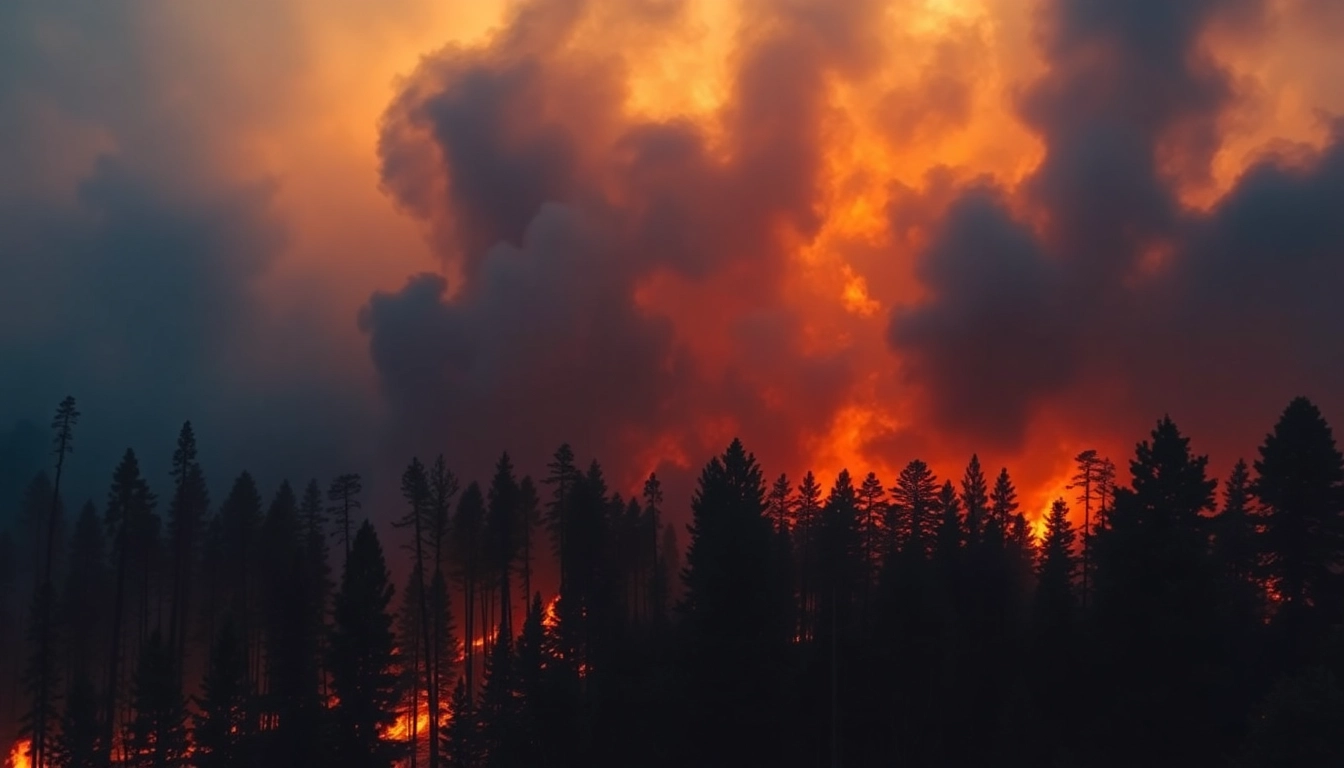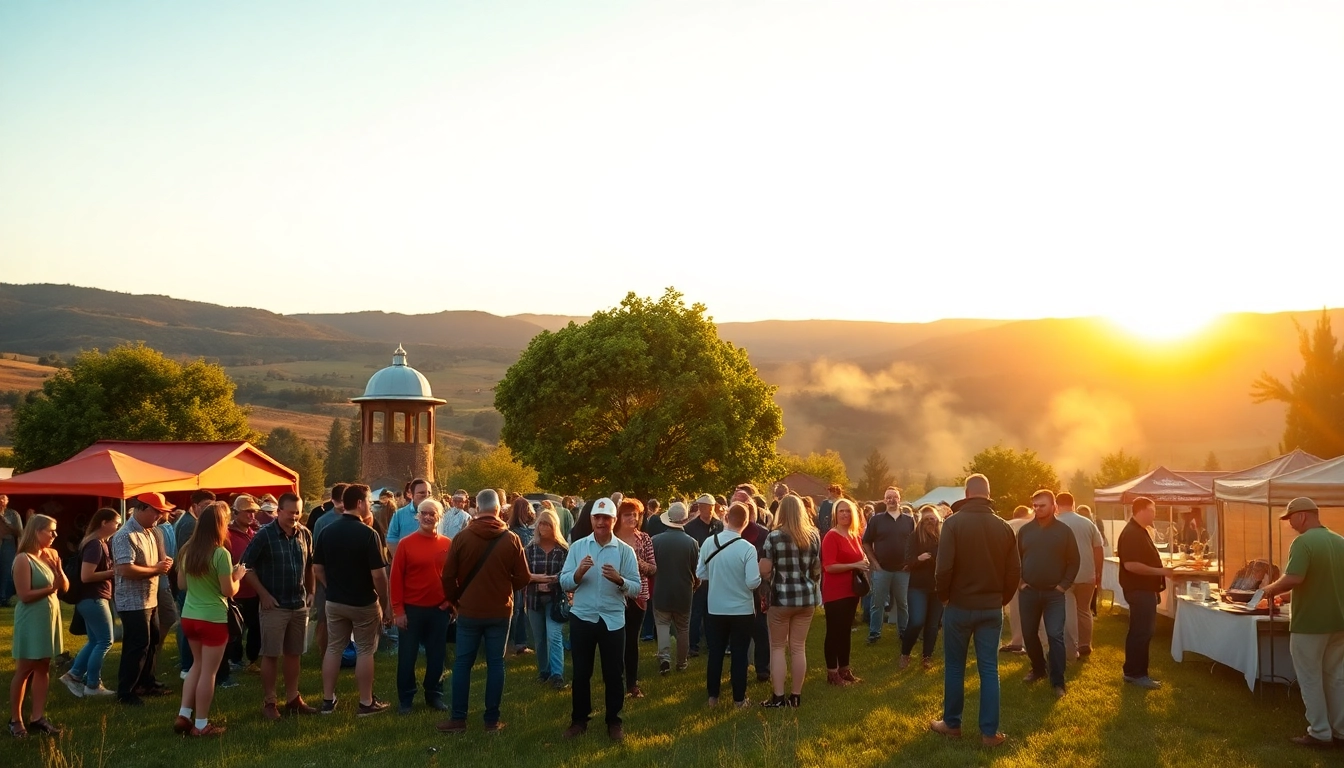Introduction to Wildfire Events
Wildfires, often referred to as forest fires, grassfires, or bushfires, represent some of the most devastating events in natural disaster history. These uncontrolled fires can consume vast areas of land, impacting ecosystems, wildlife, and human communities alike. As we witness increasing wildfires across various regions globally, particularly in areas susceptible to dry conditions and high temperatures, understanding the nature and implications of wildfire events becomes paramount.
What Are Wildfire Events?
Wildfire events are uncontrolled fires that ignite in forests, grasslands, or other natural areas. They can arise from numerous sources, including natural causes such as lightning and human activities like discarded cigarettes or uncontrolled campfires. The intensity and spread of these fires can vary immensely, influenced by factors such as weather conditions, terrain, fuel availability, and fire behavior. The consequences of wildfires extend far beyond the immediate area of destruction; they affect air quality, contribute to soil erosion, and can threaten human life and property.
The Importance of Wildfire Awareness
Raising awareness about wildfires is critical for multiple reasons. With climate change exacerbating dry conditions and increasing temperatures, the frequency and severity of wildfires are likely to continue rising. By educating communities about fire risks, we cultivate a proactive approach to wildfire preparedness and risk reduction. Awareness campaigns also serve to inform the public about evacuation routes, emergency procedures, and the importance of creating defensible spaces around properties in fire-prone areas.
Historical Overview of Wildfire Events
Historically, wildfires have played a significant role in many ecosystems, promoting biodiversity and ecological balance. However, the perspective on wildfires has transformed over time; earlier fire suppression policies often aimed to eradicate wildfires completely. This response shifted during the late 20th century as researchers recognized the positive ecological role of fire. Events such as the Yellowstone fires of 1988 marked a pivotal moment, showcasing the necessity of incorporating fire into natural landscape management rather than solely focusing on suppression.
Causes and Classifications of Wildfire Events
Natural vs. Human-Induced Wildfires
Wildfires can be broadly categorized into natural and human-induced events. Natural wildfires mainly result from natural phenomena like lightning strikes, while human-induced wildfires stem from activities such as land clearing, accidental ignitions, or intentional arson. As urban areas expand into wildland regions, the interaction between human activities and natural fire regimes amplifies the risks associated with wildfires.
Classification of Wildfire Events by Intensity
Wildfires are classified by their intensity and behavior, including surface fires, ground fires, and crown fires. Surface fires typically burn along the forest floor, affecting litter and small vegetation. Ground fires occur in the soil and can smolder for extended periods, burning organic matter below the surface. Crown fires, among the most intense, spread through the tree canopies, driven by strong winds and high temperatures. Understanding these classifications aids in developing effective firefighting strategies tailored to specific fire behavior.
Factors Contributing to Wildfire Occurrences
Several factors contribute to the occurrence and spread of wildfires, including climatic conditions, topography, and vegetation types. Changes in climate, such as prolonged droughts and elevated temperatures, significantly increase susceptibility to wildfires. Additionally, areas with abundant dry vegetation and complex landscapes tend to foster more intense and uncontrollable fires. Proactive monitoring of these elements allows communities to assess fire risk levels and prepare accordingly.
Impact of Wildfire Events on the Environment
Effects on Wildlife and Ecosystems
Wildfires have profound effects on wildlife populations and ecosystems. On one hand, fires can destroy habitats and lead to the loss of flora and fauna. On the other hand, many ecosystems have evolved with fire as a natural process, developing resilience and recovery mechanisms. For example, certain plants have adapted to thrive post-fire, benefiting from the nutrient-rich ash and the reduction of competing plants. The balance between the destructive and rejuvenating aspects of wildfires underscores the complexity of their role in ecological dynamics.
Air Quality and Public Health Implications
The smoke and particulate matter generated by wildfires pose significant health risks to respiratory systems. Air quality can deteriorate dramatically during large wildfire events, leading to increased hospitalizations due to asthma, respiratory infections, and cardiovascular issues. The implications of air quality extend beyond immediate fire zones; smoke can travel thousands of miles, affecting communities far removed from the flames.
Economic Costs Associated with Wildfire Events
Wildfires exact a heavy economic toll, impacting sectors ranging from real estate to tourism. The direct costs of firefighting operations and recovery efforts can reach into billions of dollars, as seen in recent devastating fires across the western United States. Furthermore, indirect costs arise from the loss of productive land, infrastructure damage, and subsequent impacts on local economies relying on tourism and natural resources. For instance, the economic fallout from the catastrophic 2020 wildfires in California underscores the need for efficient wildfire management and prevention strategies.
Community Preparedness for Wildfire Events
Creating Effective Evacuation Plans
A comprehensive evacuation plan is crucial for minimizing casualties during wildfire events. Effective plans should account for accessible routes, designated shelters, and communication strategies to keep residents informed. Communities should conduct regular drills to ensure that residents are familiar with evacuation procedures. Local authorities can also utilize social media and text alerts to disseminate critical information quickly and efficiently during an evolving wildfire situation.
Building Fire-Resilient Communities
Fire resilience encompasses various strategies that communities can employ to mitigate the risks associated with wildfires. These include implementing building codes encouraging fire-resistant materials, creating defensible spaces around homes, and maintaining local vegetation. Landscaping strategies, such as firebreaks and the use of native, fire-resistant plants, can significantly reduce risks. Community involvement is essential; fostering a culture of preparedness ensures collective resilience against the threat of wildfires.
Role of Education in Wildfire Preparedness
Education plays a vital role in preparing communities for wildfire events. Outreach programs that inform residents about wildfire risks, safety measures, and preparedness techniques can help mitigate threats. Schools, community centers, and local organizations can facilitate workshops and distribute informational resources to raise awareness and build a culture of proactive engagement in wildfire preparedness. By cultivating informed communities, the potential for devastating impacts during wildfire events can be significantly reduced.
Future Trends in Wildfire Events
Climate Change and Its Impact on Wildfire Events
As climate change continues to progress, its effects on wildfire patterns and occurrences will likely become more pronounced. In many regions, increasing temperatures and shifting precipitation patterns are expected to lead to more frequent and severe wildfire events. Communities must adapt to these changing dynamics, employing innovative fire management techniques and fostering resilience to minimize future impacts.
Innovations in Wildfire Mitigation Practices
Technological advancements and innovative practices are revolutionizing wildfire management. For instance, the use of remote sensing technologies and artificial intelligence can enhance fire prediction capabilities, allowing for more proactive responses. Drones equipped with firefighting capabilities are increasingly deployed to combat wildfires more efficiently. Additionally, collaborative efforts between government agencies, non-profits, and private companies foster a holistic approach to wildfire risk reduction and community preparedness.
Community Engagement in Wildfire Prevention Efforts
Engaging communities in wildland fire prevention initiatives is essential for creating sustainable and effective solutions. Volunteer programs, partnerships with local fire departments, and workshops can mobilize residents to take an active role in wildfire prevention. Collaborative projects focused on creating fire breaks and managing vegetation can further strengthen community resilience against future wildfires. The collective effort in wildfire prevention fosters a sense of shared responsibility, critical in ensuring community safety and protection.















Leave a Reply